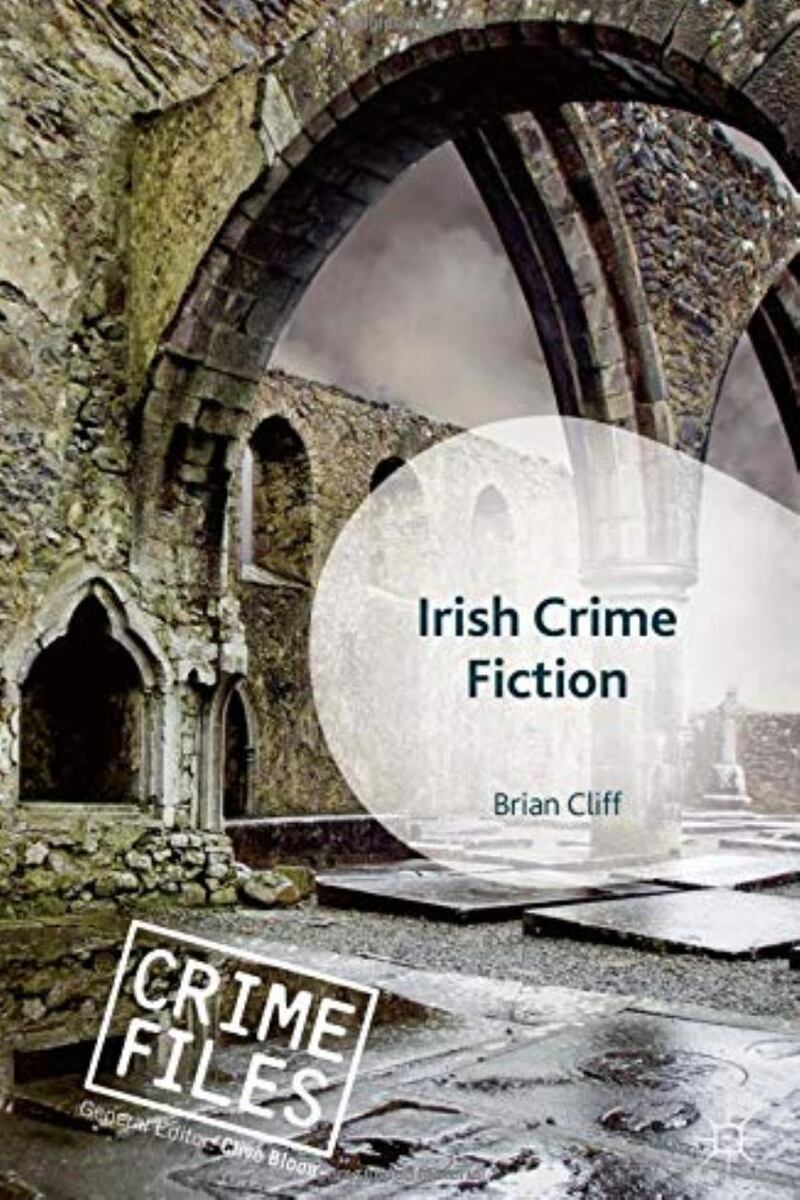Noirwich, Morecambe and Vice, Bristol Crimefest, Bute Noir: barely a corner of the UK but boasts its crime writing jamboree. The biggest of these – crime fiction’s Glastonbury – takes place in Harrogate each July. Wandering the streets of that Yorkshire town this summer, bumping into the likes of Jane Casey, Stuart Neville, Steve Cavanagh and Gerard Brennan, it was easy to credit the premise of Brian Cliff’s important new monograph. Irish crime fiction, has indeed “reached a critical mass, for authors and readers alike”. If not quite here to take over, so far as the world of crime fiction goes, the Irish are certainly here to take part.
But while Irish crime writing battens on global success – John Connolly alone has sold 10 million novels – scholarly responses to the genre have been grudgingly meagre. In a critical tradition long preoccupied with poetry and drama, where texts are approached through a nationalist optic, genre fiction has frequently slipped through the cracks. Brian Cliff’s new study aims to rectify this, tracing as it does the “chalk outline” of a neglected body of fiction. In four chapters – focused respectively on the North, the Republic, gender, and “transnational” elements – Cliff surveys with commendable verve the half-charted terrain of “Emerald Noir”.
The focus is relentlessly contemporary. There is no attempt to trace the roots of Irish crime fiction to the Gothic novels of the 19th century; no interest in the “Irishness” of Arthur Conan Doyle. Cliff’s concern is with the past 20 years and the genre’s recent explosion in the work of Tana French, Adrian McKinty, Claire McGowan and others.

Range and scope
Within this tight compass, Cliff works hard to showcase the thematic range and the social scope of Irish crime fiction. He offers sensitive readings of individual novels. He identifies the “archetypal” Irish fictional crime as “not murder, rape, kidnapping, robbery, or drug dealing, but corruption”. He shows how Ireland’s compact geography makes certain devices – serial killings or “sprawling transnational conspiracies” – implausible. And he throws out intriguing assertions – such as the key influence of Ross Macdonald’s Californian psychodramas on Irish thrillers – that might fruitfully be tested by subsequent writers.
The book’s most assured analysis comes in its opening chapter on “Northern Irish Crime Fiction”, in which Cliff explores the treatment of the Troubles in the work of McGowan, McKinty and Brian McGilloway. There was always something impertinent in the expectation – throughout the careers of Mahon and Heaney – that a lyric poem might adequately “answer” sectarian violence.
But a genre with violence as its theme; a genre that is fraught with ethical ambivalence, that orchestrates multiple viewpoints, that charts the ongoing effects of historical wrongs: such a genre – in the hands of a writer as gifted as McKinty – might legitimately be tasked with imagining the Troubles. In a series of shrewd interrogation of Northern thrillers, Cliff illuminates a body of fiction that “preserves the ambiguities and ambivalences of a complex society”.
Celtic Tiger
Similarly, in his reading of novels from the Republic "by the glow of the crash's burning embers", Cliff presents the crime novel as the defining genre of Celtic Tiger Ireland. A world of greed and self-deception, of surface pizazz and structural corruption, is mercilessly dissected in novels like Tana French's Faithful Place and Gene Kerrigan's Little Criminals.
There is no easy moralism in novels like these, no convenient distribution of sheep and goats, good guys and bad. As with most of the narratives discussed in this study, we are dealing with fiction that “holds empathy for the individual in tension with often scathing critiques of the system those individuals find themselves inhabiting”.
Cliff's book is avowedly a survey, not a comprehensive history, but some vexing lacunae remain. To chart the transition from the disposable "Troubles trash" of the 1970s to the sophisticated Belfast Noir of today without making mention of Maurice Leitch's game-changing Silver's City (1981) is a little idiosyncratic. Similarly, the decision to eschew sustained discussion of Eoin McNamee and Benjamin Black – two of the finest stylists in contemporary Ireland – leaves the book a little greyer than it need have been.
Social significance
For the most part, Irish Crime Fiction does a very fine job of valorising its subject. In the end, however, there remains something apologetic in Cliff's insistence on the crime novel's social significance. Without doubt, Irish Crime Fiction holds a burnished mirror up to the Celtic Tiger and the northern Troubles. But if crime fiction warrants serious critical attention, as Cliff quite properly asserts, then it must be on aesthetic and not merely sociological grounds.
The crime novel matters as a work of art, not just as a work of reportage. Enlightening as it is on the Irish crime novel's "content, contexts, and settings", Irish Crime Fiction has frustratingly little to say about style, about structure, about narrative technique. It was Raymond Chandler who mordantly proclaimed "the insignificance of significance" and observed that the "most durable thing in writing is style". I rather wish Brian Cliff had been paying attention.
Liam McIlvanney’s latest thriller, The Quaker, is out now from Harper Fiction.










